Customer Journey Mapping Strategies for Higher Conversion Rates

Customer journey mapping for improved conversion optimization allows you to identify where customers engage and what influences their choices. Companies like Pinduoduo have achieved impressive retention and conversion rates by aligning touchpoints with customer needs. Ecommerce brands that leverage customer journey mapping report a 59% increase in return shoppers, demonstrating tangible results. Sobot, with its omnichannel expertise and Sobot AI-powered Live Chat, provides the tools to connect with customers on their preferred channels and enhance every interaction. Consider your own journey challenges—actionable strategies powered by Sobot can transform insights into growth.
Why Customer Journey Mapping Matters
Customer journey mapping for improved conversion optimization gives you a clear view of how customers interact with your business. You create a customer journey map to see every step your customers take, from learning about your brand to making a purchase and beyond. This process helps you understand what your customers feel, need, and expect at each stage. When you use customer journey mapping for improved conversion optimization, you can spot problems and fix them quickly.
Impact on Conversion Rates
You want more conversions and loyal customers. Customer journey mapping helps you reach these goals. For example, a retail brand saw a 15% increase in conversion rates after removing friction points found through their customer journey map. By looking at your business from the customer’s point of view, you can find and remove barriers that stop people from buying. This leads to smoother experiences and higher sales. When you keep improving your customer journey map, you encourage repeat purchases and reduce customer churn. Sobot’s mission is to help you enhance every customer interaction and boost efficiency. With tools like Sobot Live Chat, you can connect with customers on their favorite channels and guide them through each stage of the journey.
Benefits for Customer Service
Customer journey mapping also improves your customer service. Starbucks used a customer journey map to study its mobile ordering app. They found long wait times and fixed them, which made customers happier. When you map the journey, you can:
- Find pain points and fix them to keep customers engaged.
- Create a smooth experience across all channels.
- Make sure every stage of the journey gets attention.
- Use automation for timely, personal messages.
- Personalize your service to increase loyalty.
Teams that use a customer journey map work together better. They see the whole customer experience and can make changes that matter. Sobot’s all-in-one contact center solutions help you manage every touchpoint, making your service faster and more effective.
Set Conversion Goals
Define Objectives
Setting clear conversion goals is the first step in building a strong customer journey strategy. You need to know what you want your customers to do. This could be making a purchase, signing up for a newsletter, or downloading an app. Start by choosing goals that match your business needs and are easy to measure.
- Conversion rate shows the percentage of users who complete a desired action. You can calculate it as (Number of Conversions / Total Visitors) × 100%.
- Macro-conversions are big actions like purchases. Micro-conversions are smaller steps, such as adding items to a cart.
- Key metrics to track include:
- Conversion Rate (CR)
- Customer Acquisition Cost (CAC)
- Customer Lifetime Value (CLV)
- Return on Ad Spend (ROAS)
- Retention and churn rates
- Revenue per visitor
Tip: Use the SMART method—Specific, Measurable, Achievable, Relevant, and Time-Bound—to set your goals. For example, you might aim to improve your conversion rate by 10% in three months by optimizing your checkout process.
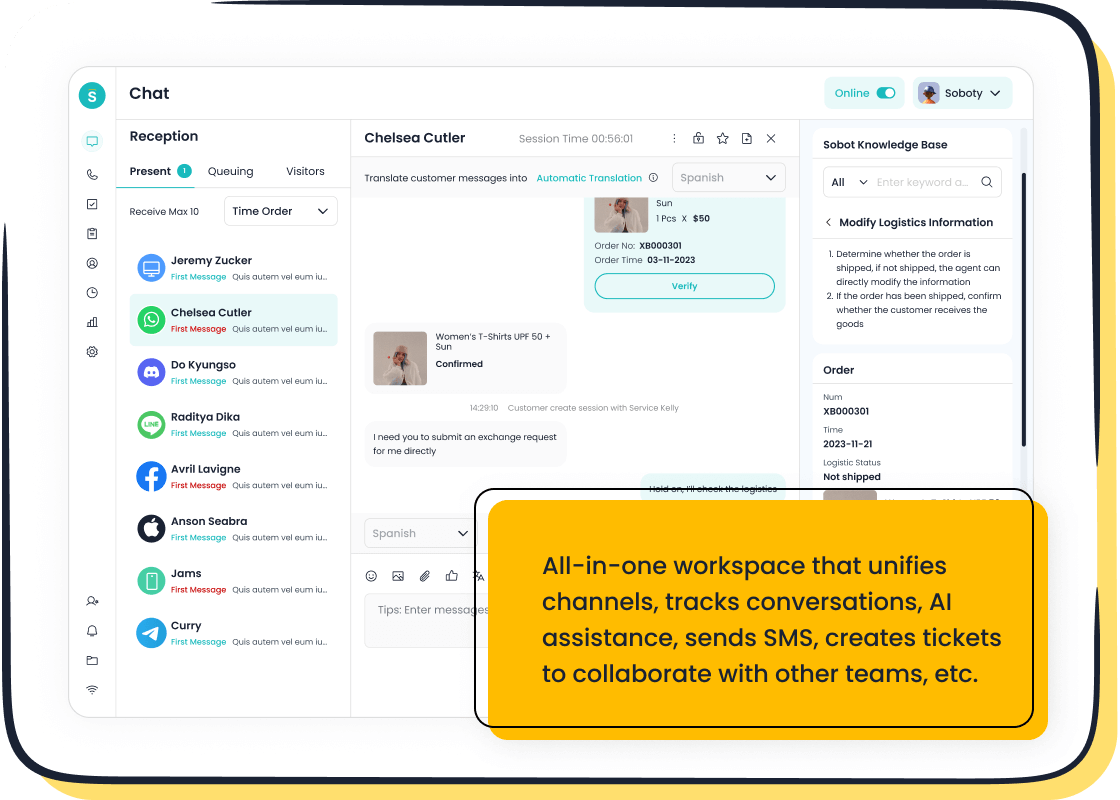
Sobot’s Live Chat helps you track these metrics with built-in analytics. You can see what works and where you need to improve, making your goals easier to reach.
Align with Customer Needs
Your conversion goals should always match what your customers want. When you understand your audience, you can create better offers and experiences.
- Segment your audience by age, location, or behavior. This helps you send the right message to the right people.
- Identify pain points, such as slow shipping or confusing checkout steps. Fixing these issues can boost conversions.
- Use customer feedback and data to guide your decisions. For example, if customers want faster support, Sobot’s omnichannel solutions let you respond quickly on their favorite platforms.
- Make sure your goals support your overall marketing plan. Consistent messaging builds trust and keeps customers coming back.
You can set goals like increasing sales by 20% with retargeting campaigns or boosting email revenue by 15% through better segmentation. When you align your goals with customer needs, you create a journey that feels personal and rewarding.
Build Customer Personas
Data-Driven Profiles
You need to know who your customers are to improve the customer experience. Building data-driven profiles helps you understand real people, not just guesses. Start by collecting both numbers and stories. Use tools like Google Analytics to track age, location, and what people do on your website. Ask for feedback through surveys or short interviews. This gives you a mix of facts and feelings.
Here is a step-by-step way to build strong customer personas:
- Gather quantitative data like demographics and user behavior from analytics tools.
- Collect qualitative data through interviews and feedback forms to learn about motivations and pain points.
- Analyze the data to find patterns using statistics and category analysis.
- Create detailed profiles with names, backgrounds, goals, and needs.
- Test your personas by talking to real users and checking if they match real behavior.
- Use AI tools, but always check results with real data.
- Make your personas easy to see with digital templates.
- Update your personas often as you get new information.
Data-driven personas help you avoid stereotypes. You get a clear picture of what your customers want, which leads to a better customer experience. Sobot Live Chat lets you collect and analyze customer data from every channel, making it easier to build accurate personas and improve every interaction.
Tip: Keep your personas fresh. Update them as you learn more about your customers to keep enhancing customer experience.
Segment for Personalization
Once you have your personas, you can group your customers for a more personal touch. Segmentation means dividing your audience into smaller groups based on what they do, where they live, or how they shop. This step is key for improving the customer experience.
- RFM analysis (Recency, Frequency, Monetary) helps you find your best customers and target them with special offers.
- Microsegmentation looks at buying habits so you can send the right message to the right group.
- Behavioral and geographic segmentation uses delivery and shopping data to match offers to interests.
- Clustering methods, like k-means, help you spot patterns in customer behavior for smarter marketing.
Sobot’s marketing solution uses these techniques to help you reach each customer with the right message. For example, you can send a discount to someone who buys often or a welcome message to a new visitor. This makes every customer feel special and improves the customer experience.
Note: Personalization is not just about using a name. It means understanding what each customer wants and meeting those needs at every step.
Map the Customer Journey
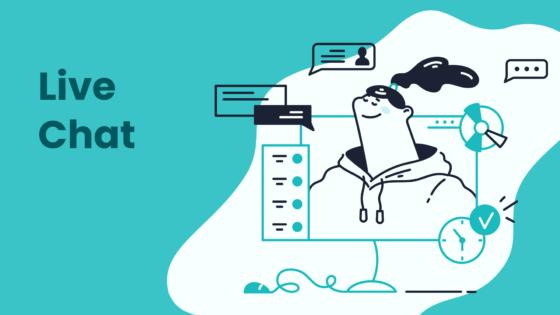
Mapping the customer journey helps you see every step your customers take, from first learning about your brand to becoming loyal advocates. When you map the customer journey, you can spot where customers interact with your business and find ways to improve their experience. A clear customer journey map shows you what works and what needs fixing. Sobot Live Chat makes this process easier by connecting all your channels—website, social media, apps, and more—into one workspace. This lets you track every interaction and respond quickly, no matter where your customers reach out.
Identify Touchpoints
Touchpoints are the moments when customers interact with your brand. You need to find every place where these interactions happen. A strong customer journey map lists all touchpoints, so you never miss a chance to connect or improve.
Here are common touchpoints you should look for:
- Online ads, print ads, and TV commercials
- Referrals from friends or influencers
- Social media posts and messages
- Virtual or in-person events
- Blog articles and company website visits
- Email campaigns and newsletters
- Product catalogs and digital stores
- Customer service chats, calls, and emails
- Reviews and feedback surveys
- Chatbot conversations and live chat sessions
- Point of sale and checkout experiences
- Subscription renewals
Amazon, for example, tracks touchpoints like product discovery, cart addition, and checkout. They use data such as click-through rates and time spent on pages to spot problems. When they noticed high cart abandonment, they added guest checkout, which improved conversions. Telus mapped customer emotions at each touchpoint and found that customers felt frustrated during plan selection. By simplifying their website, they increased satisfaction by 20%.
Tip: Use Sobot Live Chat to unify customer touchpoints across channels. You can see every message, call, or chat in one place, making it easier to help customers and boost conversions.
Visualize Stages
After you list your touchpoints, you need to visualize the stages of the journey. A customer journey map usually has five main stages:
- Awareness: Customers learn about your brand through ads, social media, or word-of-mouth. Focus on getting their attention with SEO and content marketing.
- Consideration: Customers compare your products with others. Give them detailed info, demos, and reviews to help them decide.
- Decision: Customers choose to buy. Make checkout easy and build trust with clear pricing and secure payment options.
- Loyalty: Customers use your product and come back for more. Offer great support and rewards to keep them happy.
- Advocacy: Loyal customers tell others about your brand. Encourage reviews and referrals to grow your business.
A customer journey map helps you see how customers move from one stage to the next. For example, 72% of people prefer to learn about brands through blog posts, and 69% leave their cart if checkout is too hard (Baymard Institute). When you map the customer journey, you can spot these drop-off points and fix them.
Note: Sobot Live Chat supports every stage by letting you answer questions fast, send helpful info, and collect feedback. This keeps customers moving forward and builds loyalty.
Analyze Data and Feedback
Use Analytics Tools
You need strong analytics tools to make customer journey optimization work. These tools help you see what customers do at every step. Sobot Live Chat gives you built-in analytics and reporting features. You can track over 150 indicators, such as response time, satisfaction scores, and conversion rates. This helps you spot trends and make smart choices to improve customer experience.
Many companies use advanced analytics to boost results. Here is a table showing how different tools help with customer journey optimization:
| Analytics Tool | Reported Benefits & Statistics | Supporting Evidence & Case Studies |
|---|---|---|
| Adobe Analytics | 246% average ROI; 10% increase in conversion rates; 68% of users report increased customer satisfaction with predictive analytics | Forrester and Gartner reports; Adobe's own use case with Creative Cloud; IBM report stating 80% of companies see journey analytics as critical |
| Google Analytics 4 | 25% increase in conversion rates; 30% improvement in retention; 20% increase in marketing ROI when combined with Google tools | Used by Adidas and Lexus; Forrester and MarketsandMarkets reports; integration with Google Ads and BigQuery |
| Heap | Simplifies analytics workflow with automatic event capture; linked to significant revenue and satisfaction increases | Mixpanel and Optimizely reports highlighting Heap's impact on revenue and customer satisfaction |
| Contentsquare | Up to 20% increase in conversion rates; 75% of users see improved conversion with heatmapping | Case studies from Lancôme and Decathlon; heatmapping and UX analytics features; integrates with Google Analytics and Adobe Analytics |
| Optimizely & Mixpanel | Improved conversion rates, retention, and revenue through optimization | Used by Adidas and Lexus; reports emphasize multi-channel tracking and predictive analytics capabilities |
Sobot Live Chat lets you see all your data in one place. You can use these insights to make changes that lead to better customer journey optimization and a smoother customer experience.
Gather Customer Insights
You need to get customer feedback to understand what works and what needs fixing. Sobot Live Chat makes it easy to collect feedback through surveys and chat ratings. You can also use analytics to see which parts of the journey need attention.
Top brands use analytics to gather insights and improve customer journey optimization. For example, Opay used Sobot’s platform to manage customer data from social media, email, and voice channels. This helped Opay raise customer satisfaction from 60% to 90% and increase conversion rates by 17%. When you get customer feedback and analyze it, you can make changes that matter.
Companies like Google, HSBC, and Domino’s Pizza use analytics to personalize experiences and predict what customers want. The chart below shows how many analytics tools top companies use to improve customer experience and journey optimization:
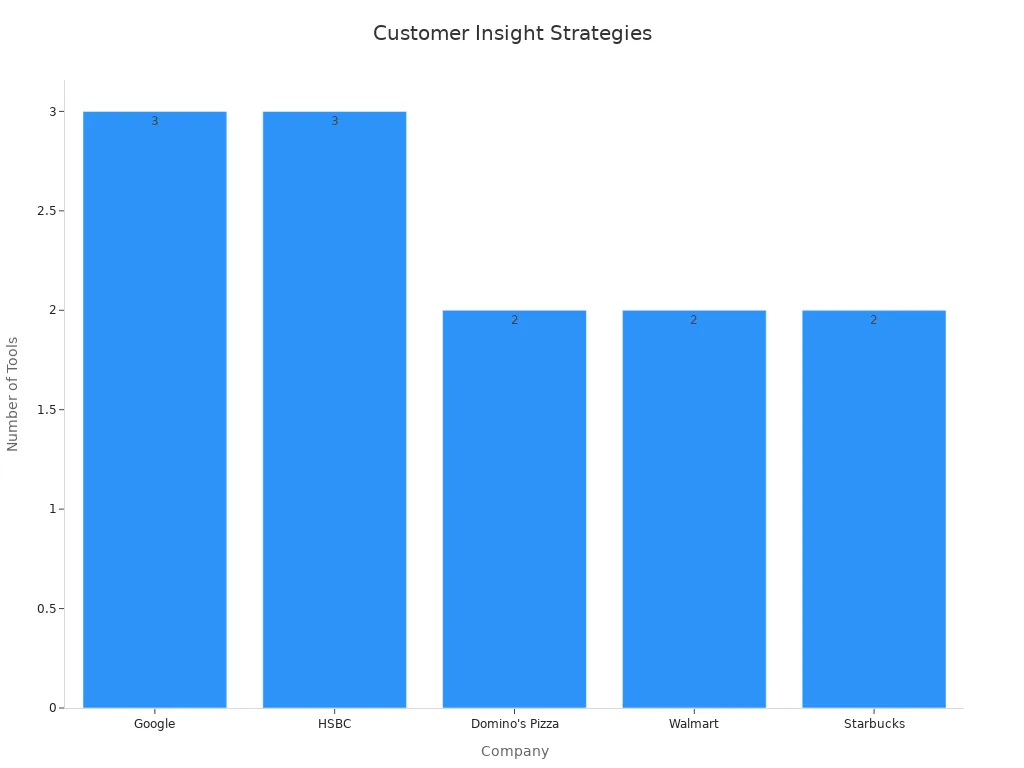
You can use these strategies to keep improving your customer journey optimization. By analyzing customer journeys and acting on feedback, you create a better customer experience and build loyalty.
Tip: Always get customer feedback at every stage. This helps you spot problems early and keep your customer journey optimization on track.
Find and Fix Friction Points
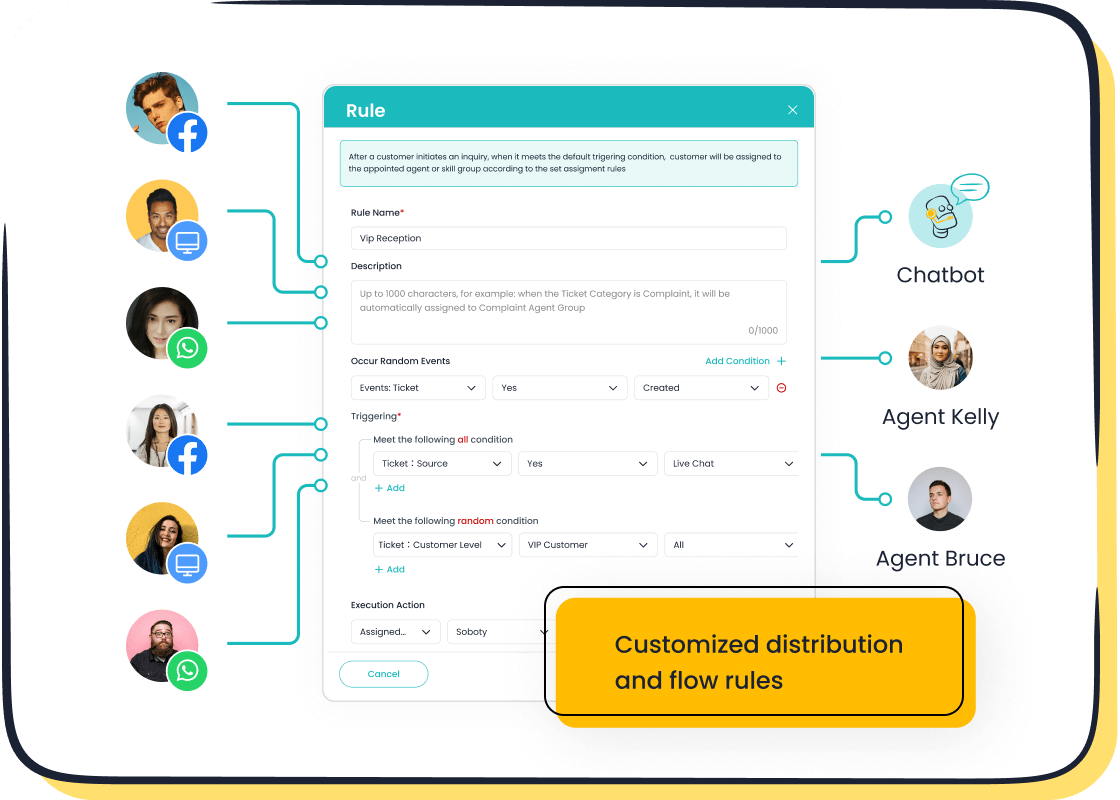
Spot Conversion Barriers
You want your customers to move smoothly from one step to the next. Sometimes, they get stuck or leave before finishing. These moments are called friction points. You can find them by looking at your customer journey map and checking each of your touchpoints.
Here are some ways you can spot conversion barriers:
- Check your conversion funnels. Look for places where many users drop off, such as during shipping options or payment steps.
- Collect user feedback with surveys or chat ratings. Customers often share why they leave, like missing trust signals or confusing instructions.
- Run A/B tests. Try different versions of a page to see which one helps more users complete their journey.
- Use behavioral analytics tools. Track how users move through your site. If they keep returning from checkout to product details, they may not have enough information.
- Review customer support tickets. If many people ask for help with the same problem, that touchpoint likely needs improvement.
- Watch session recordings or heatmaps. See where users click or stop scrolling. If they miss important buttons, your design may cause friction.
- Listen on social media. Customers often talk about problems, such as app crashes or slow loading times.
Tip: Sobot Live Chat helps you gather feedback and track user actions across all touchpoints. You can see where customers struggle and respond quickly to their needs.
Prioritize Improvements
After you find friction points, you need to decide which ones to fix first. Not all problems have the same impact. Some touchpoints affect many users or stop them from buying, while others are less urgent.
Follow these steps to prioritize improvements:
- Analyze the impact. Fix issues that block purchases or cause users to leave, like app crashes during checkout.
- Measure frequency. Focus on problems that happen often or affect a large group of users.
- Listen to direct feedback. If customers complain about a confusing checkout, make it a top priority.
- Check technical feasibility. Some fixes are quick, while others take more time and resources.
- Do a cost-benefit analysis. Choose improvements that bring the most value for your effort.
- Align with your business goals. For example, improving onboarding can boost retention.
- Address legal or compliance issues right away, such as data privacy concerns.
You can use Sobot’s analytics to see which touchpoints need the most attention. For example, if you notice many support tickets about password resets, you can simplify that process. This approach helps you make smart choices and improve the customer journey step by step.
Note: Regularly review your touchpoints and update your priorities as your business grows.
Optimize for Conversion
Implement Changes
You can boost your conversion rates by taking action on your customer journey optimization insights. Start by using automation and AI tools to make your changes faster and more effective. Sobot’s platform gives you access to AI-powered chatbots, automated workflows, and real-time analytics. These features help you respond to customers quickly and personalize every interaction.
Here are some ways automation and AI drive better results:
- Heatmaps and session recordings show you where users get stuck, so you can fix those spots.
- Predictive analytics help you see what customers might do next, letting you act before problems happen.
- AI-powered A/B testing tools test different versions of your website or messages, finding what works best for conversions.
- Personalized marketing messages created by AI increase engagement and sales.
- Tracking key metrics like bounce rates and cart abandonment helps you measure the impact of your changes.
Sobot Live Chat uses these tools to help you connect with customers on their favorite channels. You can automate responses, segment users, and send targeted offers. These steps to optimize the customer journey lead to higher conversion rates and happier customers.
Tip: Make small changes first and watch the results. Quick wins build momentum for bigger improvements.
Test and Refine
Customer journey optimization is not a one-time task. You need to keep testing and refining your approach for lasting growth. Use hypothesis-driven testing to find out what works. For example, you can change a headline or button color and see if more people click or buy.
Try these methods to improve your results:
- Run A/B tests to compare different ideas and measure which one gets better conversions.
- Use on-page surveys to gather real-time feedback from visitors.
- Analyze performance metrics like click-through rates and conversion rates to spot trends.
- Use AI tools to predict which changes will have the biggest impact.
Sobot’s analytics dashboard lets you track all these metrics in one place. You can see which changes help most and adjust your strategy. Continuous journey mapping keeps your business growing and your customers satisfied.
Note: Keep reviewing your customer journey map. Regular updates help you stay ahead of customer needs and market trends.
Best Practices and Mistakes
Do’s for Success
You can achieve better results in customer journey mapping by following proven best practices. Start by setting clear goals before you begin. This helps you stay focused and measure your progress. Involve people from different teams, like marketing, sales, and support. When everyone works together, you get a full view of the customer experience.
Use real customer data and direct feedback. Many companies skip this step, but 70% of journey maps without customer input lead to wasted revenue and misguided strategies. Focus on the most important touchpoints instead of trying to map every single interaction. This keeps your map useful and easy to update.
Keep your journey map fresh. Update it as your business grows or as customer needs change. Assign someone to own the process and make sure updates happen. Always look at your journey from the customer’s point of view, not just your own. Sobot’s Live Chat helps you gather real-time feedback and track key touchpoints across channels, making it easier to keep your map accurate.
Tip: Companies that use multi-channel mapping see higher satisfaction. According to Gartner, 76% of B2C customers use more than one channel per transaction.
Common Pitfalls
Many businesses fall into common traps when mapping the customer journey. Avoid these mistakes to save time and resources:
- Starting without clear goals often leads to confusion and wasted effort.
- Focusing only on single touchpoints can cause tunnel vision. PwC found that this approach lowers customer satisfaction by up to 20% (source).
- Collecting too much data can overwhelm your team and slow down decisions.
- Relying on guesses or internal opinions instead of real customer feedback leads to bias.
- Oversimplifying complex journeys misses important details.
- Letting your map become outdated makes it less useful.
- Failing to assign ownership can cause the project to stall.
- Ignoring actionable insights means you miss chances to improve.
Note: Sobot’s unified platform helps you avoid these pitfalls by keeping all customer data and touchpoints in one place, so you always have a clear, up-to-date view.
Customer journey mapping for improved conversion optimization gives you a clear path to higher sales and happier customers. When you use a customer journey map, you see real gains in conversion rates, customer lifetime value, and satisfaction. The table below shows how mapping drives results across industries:
| Industry Sector | Key Outcomes (Post-Mapping) |
|---|---|
| E-Commerce Retailer | 341% more conversions, 67% less cart abandonment |
| Retail Brand | 143% higher retention, 92% better satisfaction |
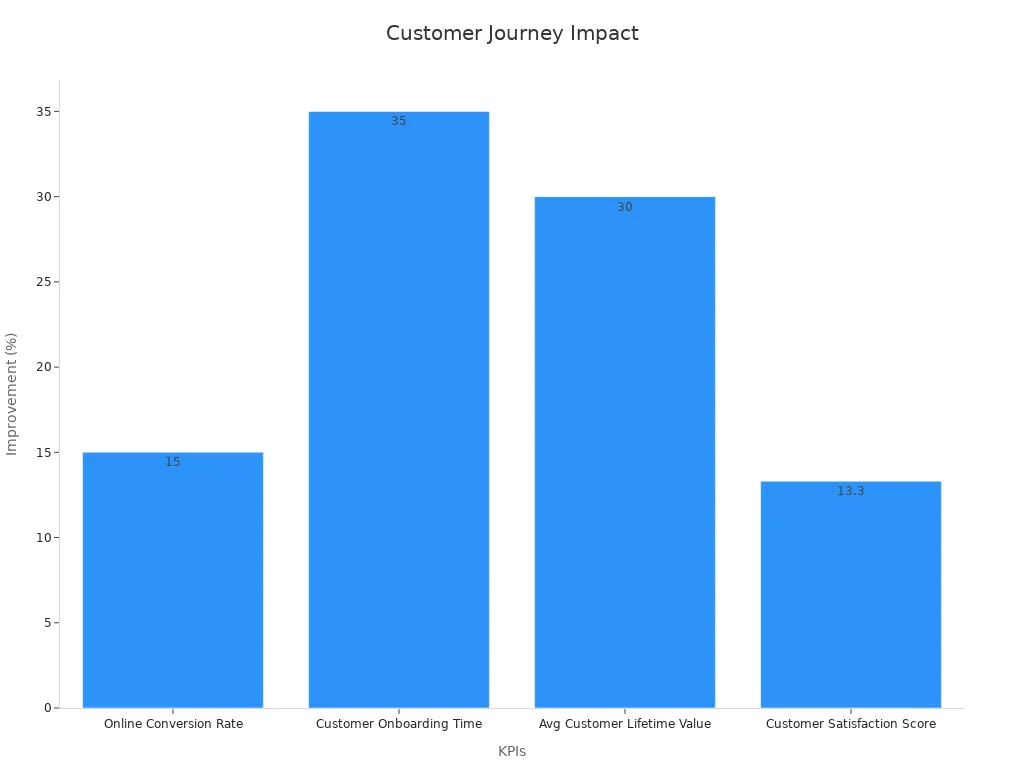
Sobot helps you create seamless, data-driven journeys with tools like Live Chat and marketing solutions. Keep updating your customer journey map for long-term customer journey optimization and business growth.
FAQ
What is customer journey mapping?
Customer journey mapping shows you every step your customer takes with your brand. You can see where people learn about you, buy from you, and become loyal fans. This tool helps you find ways to improve each part of the journey.
How does customer journey mapping increase conversion rates?
Customer journey mapping helps you spot where customers drop off. For example, 69% of shoppers leave if checkout is hard (Baymard Institute). You can fix these issues and guide more people to buy. Sobot Live Chat helps you track and improve these steps.
Why should I use Sobot for customer journey mapping?
Sobot gives you tools like Live Chat and analytics to connect with customers on any channel. You can see all touchpoints in one place. Sobot’s platform helps you boost conversion rates and improve customer satisfaction with real-time data.
How often should I update my customer journey map?
You should update your customer journey mapping every few months or after big changes. New products, website updates, or customer feedback can change the journey. Regular updates help you keep improving and growing your business.
Can customer journey mapping help with customer service?
Yes! Customer journey mapping lets you find pain points in your service. You can use Sobot’s unified platform to respond faster and solve problems. Happy customers stay longer and tell others about your brand.
Tip: Customer journey mapping works best when you use real data and feedback. Sobot’s analytics make this easy.
See Also
Top Ten Ways To Improve Customer Satisfaction With Live Chat
Ways Chatbots Enhance Customer Experience In E-commerce
Increasing Sales Through Effective Ecommerce Live Chat Tools
